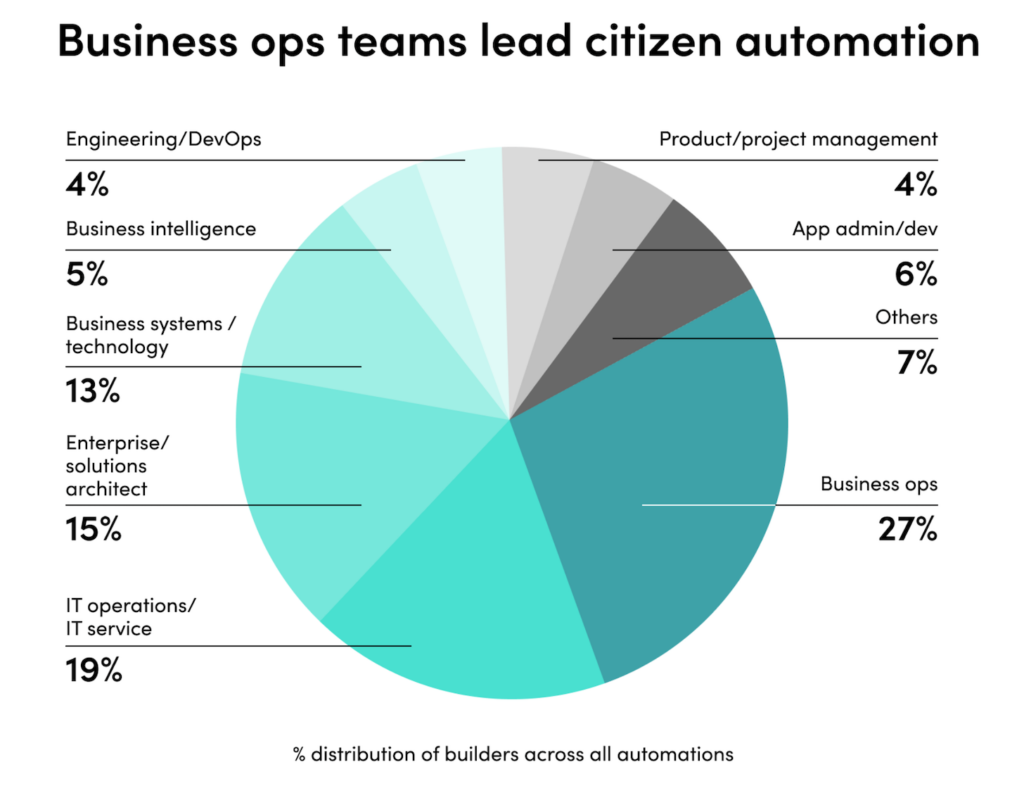I believe these two things are true:
- Technology is changing very rapidly, and those changes seem to be accelerating.
- Changing an organization — how it thinks and behaves — is still hard and slow.
These two truths are at the core of this blog’s mission: helping marketers understand how marketing technology is changing and how they can successfully adapt their organizations to those changes. But I’ve struggled to find a concise way to visualize the interplay between those two dynamics.
Yesterday, I had an epiphany and sketched the graph at the top of this post.
Consider the Y-axis to be “quantity of change” and the X-axis to be time.
Technology advances exponentially — the sharply rising blue curve on top. This is a generally accepted phenomenon. Moore’s Law is the exponential growth of computing power. Metcalfe’s Law is the exponential value of interconnections on expanding networks. (See the 7 laws of technology for marketers for an explanation of those laws.) The futurist Ray Kurzweil has identified this exponential technological progress on many fronts as part of a law of accelerating returns.
Of course, some kinds of technological change are harder to quantity. For instance, how should we measure how fast social media is changing? But I think we all feel the incredible velocity of technological change in our lives, and we would characterize it as something faster than steady, linear growth.
But organizations absorb changes logarithmically — the much slower rising red curve below it. It takes time for people to alter their thinking and their behavior. With groups of people, where there are existing structures, processes, incentives, and cultural momentum, it takes even more effort to turn the ship. The larger the group, the greater the institutional resistance.
Admittedly, this logarithmic limit to organizational change isn’t a well-known law — at least not one that I know of. But based on my experience, that’s a pretty close approximation. And although I haven’t seen a mathematical equation for that limit, there have been hundreds of best-selling books written on the difficulties of personal and organizational change. Empirically, the limit of change for humans is less than linear.
I’d also emphasize that this is a limit. In other words, it’s not feasible for an organization to change faster than that. But it’s certainly possible for an organization to change more slowly — or not at all. In fact, in the absence of good leadership, stagnation seems like the default outcome. But even with great leadership, an organization can’t win by outracing technology. It needs a more nuanced strategy.
The great management dilemma of the 21st century is the relationship between these two curves: technology is changing faster than organizations can absorb change.
In A.G. Lafley’s book, Playing to Win: How Strategy Really Works, he drives home the point that strategy is choice. It’s decisively choosing to do certain things and to not do others. Great strategies provide an unequivocal guide to deciding what’s in or out, rather than timidly trying to do everything half-baked.
That is the crux of technology management. We can’t adopt all technological changes, but we can consciously choose some. Great technology management is choosing which changes to absorb — ideally those that are best aligned with the organization’s overall strategy.
In the graph, it’s intentionally deciding what’s in (the red shaded area) and what’s out (the blue shaded area).
We also need to recognize how entwined organizational change is in technology strategy. It’s not enough to decide which technological changes to embrace or to deal with the technical implementations of those choices. To succeed, technology management must explicitly address how those technologies will be absorbed into the operations and the culture of the organization. It must proactively coach, coax, nurture, educate, train, elevate, and inspire the people who will wield that technology.
In no context is this more true than marketing and marketing technology.
Of course, it’s true in other disciplines too. And someone else may have already made this exact observation — no doubt someone will inform me of my lack of originality in the comments below. But if this is a novel way of framing this challenge, then in honor of the marketing technologists who wrestle with this dynamic every day, I’d propose calling it Martec’s Law:
Martec’s Law:
Technology changes exponentially;
organizations change logarithmically.
What do you think?




I wrote a long reply to this post but it failed to save. Instead of re-writing it here, I’m going to write a blog post on the topic building on Martec’s Law.
Iamreff’s Corollary to Martec’s Law:
Sum of employee individual attitudes towards change / # individuals * organizational adaptivity constant = organizations ability to harness change
I’ll let you know when the post is up.
As always, thanks for your leadership in this space and keep up the good work.
I like it! Something isn’t really a law until there’s a corollary to it. 😉
You should check out Race against the Machine by Brynjolfsson and McAfee. http://raceagainstthemachine.com/
They describe this same principle as technological unemployment.
Mathieu
Great reference — thank you! That is a fascinating book, and yes, I definitely see the parallels with technological unemployment. In some ways, this is that dynamic on an organizational level?
Great article Scott. This is not only intuitive, I think it is also something that any business leader who understands business strategy would confirm. Also, great job of boiling this complex issue into a nice easy to understand law and graph. Sharing now as widely as I can 😉
Thanks, Michael — greatly appreciated!
Hi Scott
Great piece. I wrote an article a few years ago called “Strategic Drift in Marketing” which echoes a few points in your model which I love. It comes down to marketing leaders (like most people) who follow an incremental model to change and often fail to see a step change in their markets and the technology they use to service those markets. The end result is larger and more uncomfortable gap to cross. With a CMTO in place who is aware of these changes they stand a better chance of seeing, understanding and absorbing these changes. Like Michael I am sharing as widely as I can
Thanks, Bill. Glad to hear this resonates with your experience. “Strategic Drift in Marketing” sounds like a valuable way to frame this issue.
I think you’re really right on about the difference between increments vs. big steps. Those big steps are one of the ways that companies can get out from under the exponential curve of technological change.
For a given technology, strategically pick certain big steps to take — when the evolutionary path of that technology makes it convenient and it matches well with your business strategy. I agree that a “chief marketing technologist” should champion that mission as one of his/her key responsibilities.
But I acknowledge that even though that makes sense on paper, the organizational and mental changes required to make those big steps may still be quite difficult.
Great post. The premise of a lot of my work is that technology is changing faster than organization’s ability to adapt but the solution cannot be just a technical one although yes, IT strategy definitely needs to adhere – but the whole organization and the basis of value/competition starts to change because most technology is a commodity. What’s even more interesting is how very critical it is for business leaders to understand both technology and business – those that do will be more capable of making good strategic choices.
Sharing one of my keynote presentations because it’s related and you might find it interesting – http://www.slideshare.net/rhappe/are-you-the-red-queen
Thank you for the visualization, I may use it (with attribution, of course)
Thanks, Rachel. I couldn’t agree more vigorously with your point that leaders should understand both business and technology — at least to the degree that it enables them to make good strategic choices.
I love your “Are You the Red Queen” presentation — yes, that is exactly the dynamic.
And do please feel free to use any of my visualizations.
Scott, I think that there is what I would call a “harvest” period for organizations. For example, there is a wealth of technology in play right now and for organizations to harvest the value from these technologies, they must have in place the processes and competencies to leverage the technology. This takes time. Yet during this time, the technology minds are hard at work on next generation capabilities and innovations. This, in my mind creates a very explainable lag.
Now, once the harvest from the previous technology wave reaches diminishing returns, an organization attempts to catch up once again and we see another thrust of catch-up and investment in organizational fitness to align with the new technology.
I would almost say that your technology curve is right on but there may be an an organizational “harvest curve” that spurs off of that technology curve every so often as companies try and implement these technologies to drive top and bottom line results.
Thanks for your continued insights.
Great post Scott! Still just as relevant in 2019 as when you originally published this. I plan to share some of your key points in my Teradata Universe talk tomorrow.
Ed- I like your harvest analogy. We informally called it “Unleash the Beast” within our team. After 3 years of harvesting our last “reset”, we’re gearing up for our next round. Of course technology hasn’t been on hold during this time ing so we’ve got some work ahead of us!
Pingback: @iamreff's Law: Organizations can drive innovation!
K. Eric Drexler’s “Radical Abundance” is a peak into the far future on what are some of the implications of exponential change in nanotech on the whole of society. We should fold his visions into our current focus on this subject. The gap is a grand canyon.
Thank you for your insights
What a great and simple way. I will finish a book about more or less this topics and I love to integrate ( and translate to german ) martecs law…..
Did this idea ever get developed further? Specifically, the part about organizations changing logarithmically? When we say technology changes exponentially, we can point to Moore’s Law as an example, and so it is clear what “change” means in that context. I don’t know for sure how “change” is being used here with regards to organizations. If you can tighten up the math just a little bit, you might really have something here.
Its brilliant! Lots of paradigms!
Dear Scott, I support your point of view with all my experience, especially a practical one. For more than 10 years I was involved in the consulting and IT-ifrastructure developing at big enterprises in Russia, Kazakhstan, Uzbekistan, Belorussia. The MAIN result (which a hell of practical data) was that there is one critical stopper in companies’s development of IT, and that is the gap between IT progress and eagerness of IT team to implement the ‘innovative technologies’ and the business tasks. The gap does always exist and is quite big, so that the situation is that the IT team is almost always trying to ‘push’ the new tecnologies and instruments, but in very, very many cases they are not needed or needed only partially. Besides this ‘pushing’ leads to misbalancing of the infrastructure development. I think you touched a very actual and important topic. For instance when I wrote my theses for MBA in Warwick just on this topic, I realised how little is the pool of research towards this directions and in my practical work with clients – how small is amount of managers (both from IT and business sides) who clearly understand this. Thank you. Alexander. (my e-mail is mexican2000@mail.ru – and I can additionally send you some materials from my research to share, if interested.)
Martec law was quoted by the Portuguese navy with respect to asymmetrical warfare. It is definitely a law now.